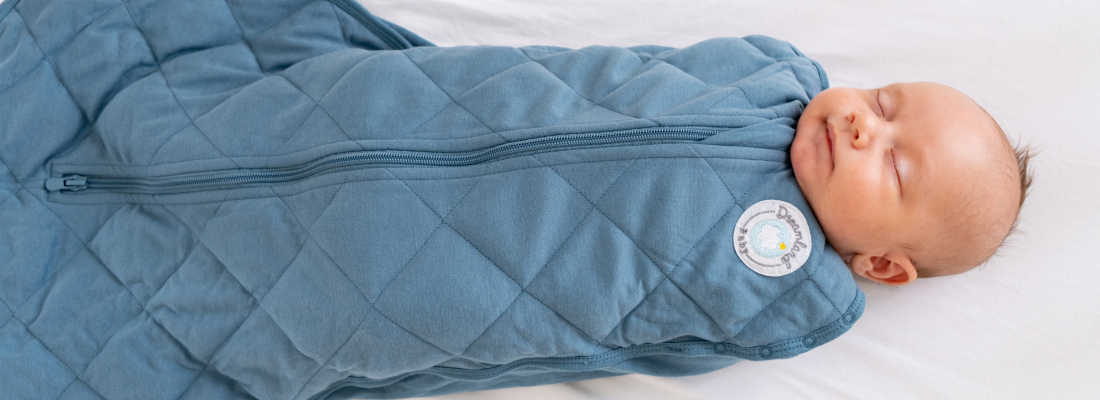It’s finally time! Or, is it? It can be tricky to acknowledge signs of labor sometimes. Our uteruses can experience growing pains, round ligament pains, and of course, Braxton Hicks contractions. Those pesky “false labor” pains can really keep us on our toes.
With the excitement of meeting your little one increasing each day, it's normal to be on high alert, taking note of every little twinge and discomfort - wondering, “is this labor?”
Keep reading to learn the true signs of labor, including some not-so-common indications that your sweet baby will be in your arms soon.
What are the 4 main signs of true labor?
Familiarizing yourself with the signs of true labor can help you feel prepared when the time comes. There are four main signs and symptoms that likely mean that labor has begun.
- The bloody show: Close to the time that your baby is ready to make their entrance, you might lose some or all of your mucus plug. This can be reddish brown and resemble mucus that you might see in your tissue when you’re sick. Some women do not see their mucus plug at all before birth.
- Pain in your back and/or belly: Any pain in your back or lower stomach that is not easily alleviated by a change of positions, heating pad, or other remedy could be a sign of labor.
- Consistent contractions: By consistent, we mean 30-50 second contractions that come every 5-10 minutes. There are many contraction timer apps available to help you keep track or you could have your partner track your contractions with a pen and paper. Either way, monitor your contractions whenever you experience more than one.
- Water breaking: This does not always look how it does in the movies. Water breaking can sometimes be a slow trickle. It is not uncommon to wonder whether any wetness is amniotic fluid or perhaps a little urine leak (let’s be real, it happens). When in doubt, your doctor can likely test the fluid for you.
What are some uncommon signs of labor?
Some signs of labor, while great indicators, are not so common. Some, you might just hear about less often because they’re not-so-pleasant.
- Diarrhea: You can thank the hormone prostaglandin for this one. It’s production amps up before labor to relax and soften your cervix (so, it’s not all bad). Unfortunately, your GI tract is not immune to its relaxing effects. Make sure you’re sipping on lots of water if you experience pre-labor diarrhea.
- Urge to poop: Glamourous, right? That urge to poop is actually pressure on your rectum from your baby’s head. If you experience this pressure along with consistent contractions, your baby is likely ready to be born.
- Lightning crotch: This is, actually, exactly how it feels. The pressure from your baby’s head leading up to labor can cause a sensation that feels exactly as you imagine being struck by lightning in your vagina would feel like. If you know, you know.
How do contractions feel when they first start?
Take this information with a grain of salt - because contractions can feel different for everyone. Here are some common ways that contractions could be described.
- Similar to period pain: Maybe very intense period pain. Dull, achy cramps reminiscent of that time of the month may feel similar to early labor contractions.
- Dull back pain: Lower back pain may be confusing for some mothers, especially if back pain is something you may struggle with on a regular basis. If it does not go away with movement, heat, or changing positions, it may be what’s called “back labor.”
- Pain in thighs and legs: Less commonly, contractions can be felt in your inner thighs with a downward radiating leg pain.
How do you know the difference between contractions and baby moving?
In case things weren’t confusing enough surrounding labor and all these bodily functions and feelings, your baby’s movements can also mimic labor pains. As your little one runs out of space in the womb, their movements may put pressure on your skin, causing a tightening sensation. The best way to tell if it’s labor or your little bug getting snug is to take your fingertips and feel the tops and sides of your uterus. If there are some soft spots, it is probably just your baby getting comfortable. If your uterus feels tight all over, it is probably a contraction. Take note of how long it lasts and if you feel any more tightening.
What is the difference between early labor and active labor?
The lines here are blurry, but there are some general guidelines for differences between early and active labor.
Early labor usually describes the period when your cervix is dilating from 0 to about 6 centimeters. During this time, you do not have to make your way to the hospital at the first labor twinge (unless otherwise instructed). Try to make yourself comfortable until contractions are about 5 minutes apart for an hour or so. This is the beginning of active labor.
Active labor describes the period of time when your cervix dilates from 6 centimeters until you are ready to push. On average, active labor can last anywhere from 3-5 hours, although this can vary.
Can you be in labor without contractions or water breaking?
Labor can be such a wildly different experience for every mother. Your water may not always break, sometimes the doctor has it break it for you. In some cases, contractions may not feel strong enough to even show up on your radar.
Conclusion
Labor is a beautiful, scary, messy, wonderful experience for most. The more you know about the signs of labor, the better prepared you will be when that magical moment arrives. For every magical moment after birth, Dreamland Baby is there to make it even more sweet. Help your baby get the sleep they need (so you can, too) with Dreamland Baby sleep essentials.
Prepare for life with a baby. Shop Dreamland today for sleep solutions to help your baby fall asleep faster, and stay asleep longer!
Sources:
What are the 4 main signs of true labor?
https://roshmfm.com/how-to-identify-signs-of-true-labor/
What are some uncommon signs of labor?
https://cradlewise.com/blog/weird-signs-labor-is-near
How do contractions feel when they first start?
https://www.pregnancybirthbaby.org.au/giving-birth-contractions#:~:text=People%20experience%20contractions%20in%20different,up%20to%2030%20minutes%20apart.
How do you know the difference between contractions and baby moving?
https://www.texashealth.org/baby-care/Pregnancy/braxton-hicks-contractions#:~:text=You%20can%20tell%20the%20difference,are%20probably%20causing%20the%20sensation.
What is the difference between early labor and active labor?
https://americanpregnancy.org/healthy-pregnancy/labor-and-birth/first-stage-of-labor/#:~:text=Early%20Labor%3A%20The%20onset%20of,fully%20dilated%20to%2010%20centimeters


